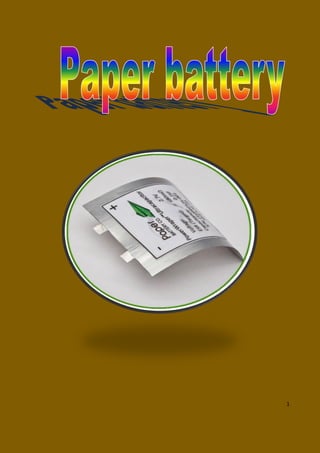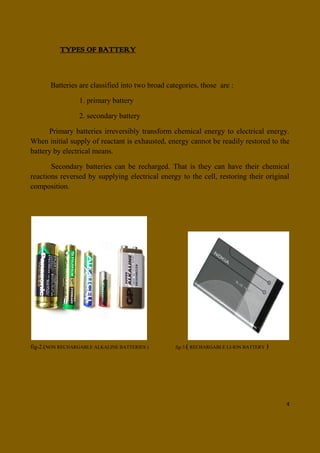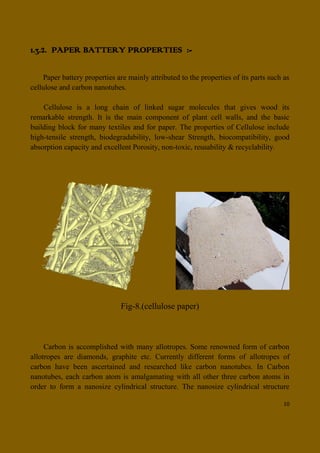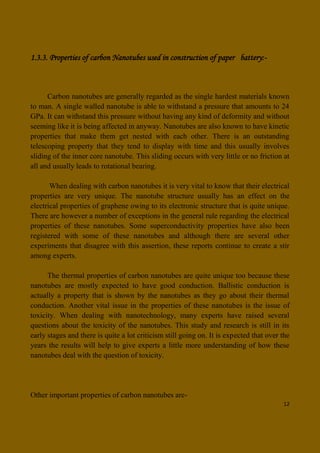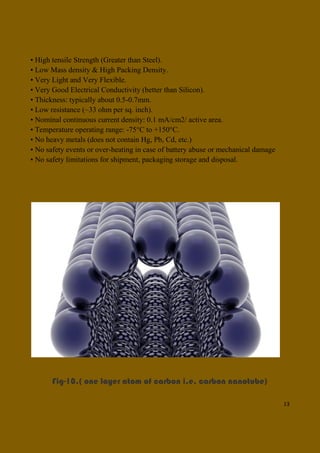The document provides a comprehensive overview of paper batteries, detailing their composition, manufacturing processes, and potential applications in various fields such as electronics, automobiles, and medical science. It highlights the advantages of paper batteries over traditional batteries, including biodegradability, flexibility, and high energy storage capacity, while also addressing limitations of current electrochemical batteries. The document also discusses the history, properties, and functioning of paper batteries, emphasizing their innovative design and environmental benefits.
